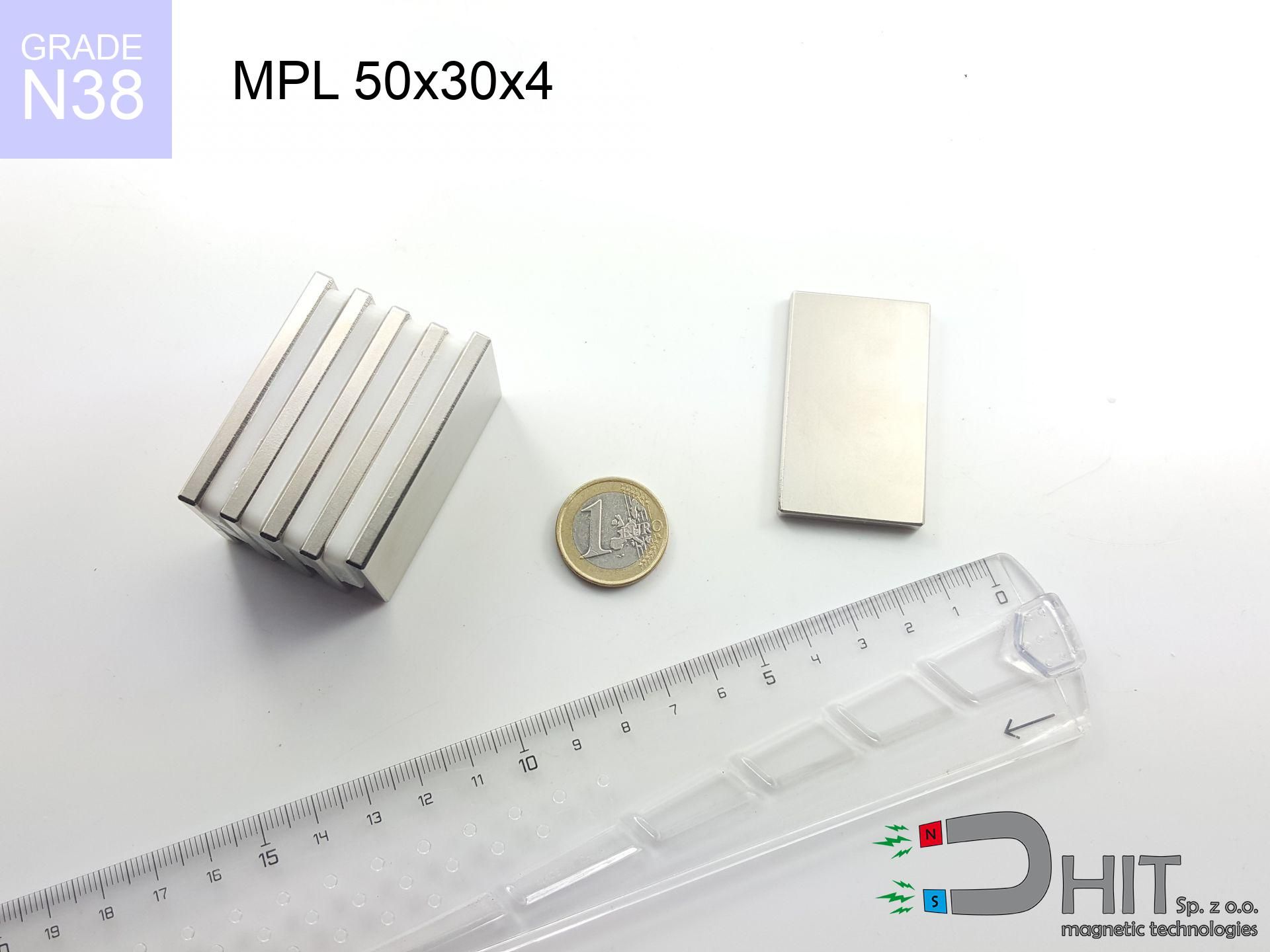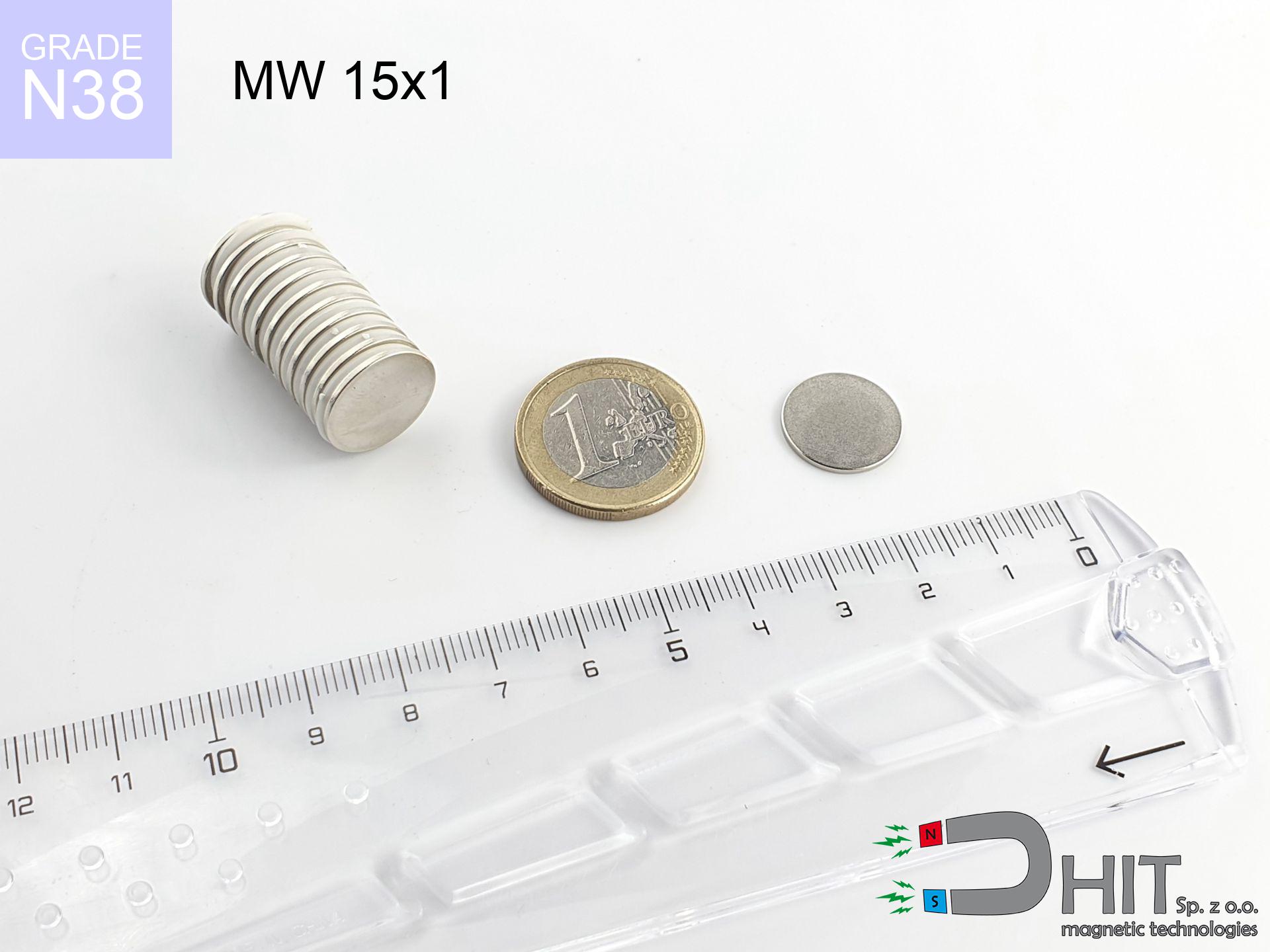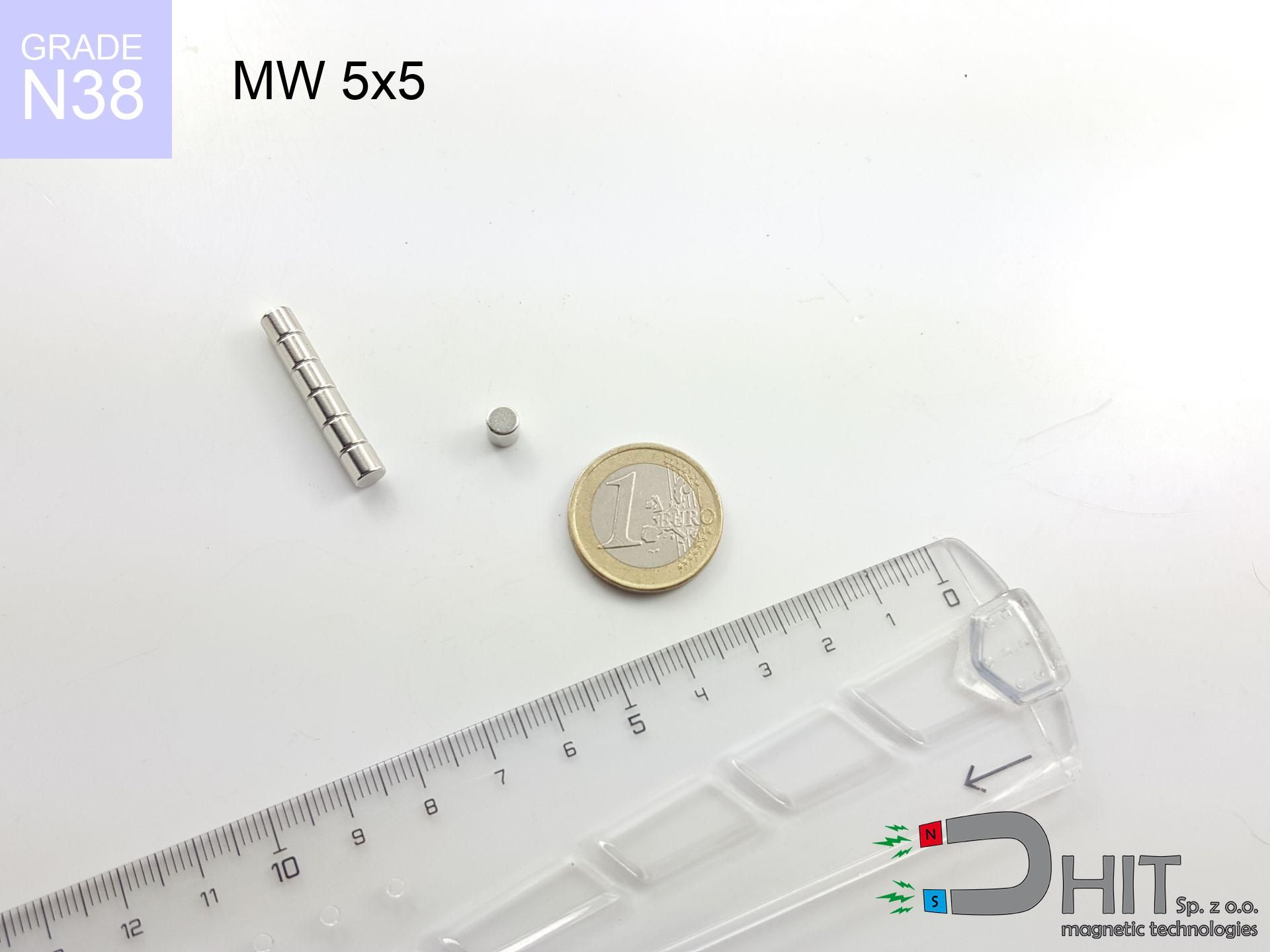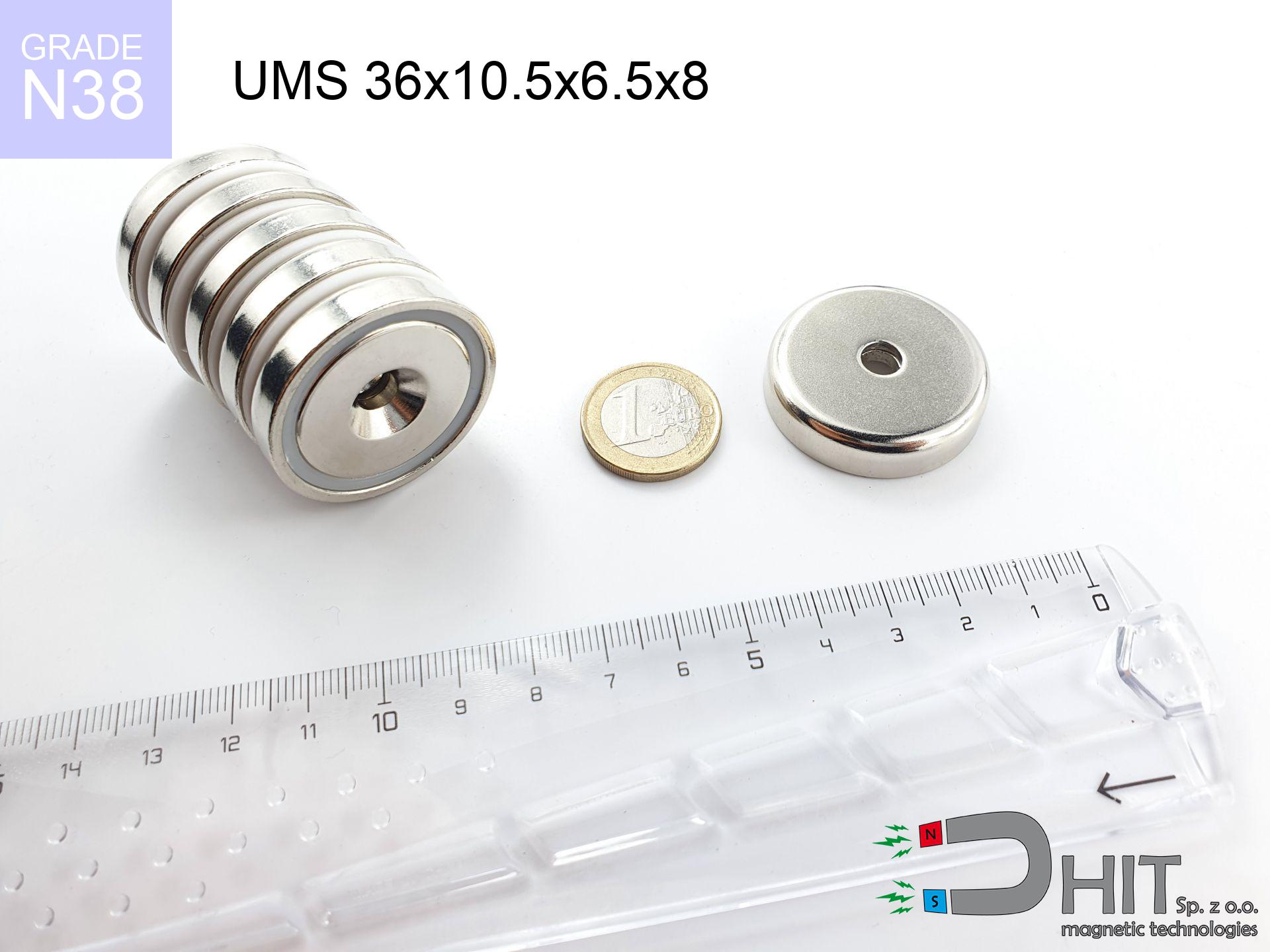MPL 50x30x4 / N38 - lamellar magnet
lamellar magnet
Catalog no 020497
GTIN: 5906301814955
length [±0,1 mm]
50 mm
Width [±0,1 mm]
30 mm
Height [±0,1 mm]
4 mm
Weight
45 g
Magnetization Direction
↑ axial
Magnetic Induction
120.04 mT
Coating
[NiCuNi] nickel
25.83 ZŁ with VAT / pcs + price for transport
21.00 ZŁ net + 23% VAT / pcs
bulk discounts:
Need more?Looking for a better price?
Call us
+48 888 99 98 98
if you prefer let us know through
contact form
through our site.
Specifications along with shape of a neodymium magnet can be analyzed using our
our magnetic calculator.
Same-day processing for orders placed before 14:00.
Magnetic properties of material N38
Physical properties of sintered neodymium magnets Nd2Fe14B at 20°C
Shopping tips
Pros as well as cons of rare earth magnets.
Apart from their notable magnetism, neodymium magnets have these key benefits:
- They retain attractive force for almost ten years – the loss is just ~1% (based on simulations),
- They have excellent resistance to magnetism drop when exposed to external fields,
- A magnet with a metallic nickel surface looks better,
- Neodymium magnets achieve maximum magnetic induction on a small surface, which increases force concentration,
- Neodymium magnets are characterized by extremely high magnetic induction on the magnet surface and can function (depending on the shape) even at a temperature of 230°C or more...
- Thanks to flexibility in constructing and the capacity to adapt to individual projects,
- Fundamental importance in advanced technology sectors – they are used in HDD drives, drive modules, advanced medical instruments, as well as multitasking production systems.
- Relatively small size with high pulling force – neodymium magnets offer strong magnetic field in compact dimensions, which allows their use in miniature devices
Disadvantages of NdFeB magnets:
- They are fragile upon too strong impacts. To avoid cracks, it is worth protecting magnets in a protective case. Such protection not only protects the magnet but also improves its resistance to damage
- We warn that neodymium magnets can reduce their power at high temperatures. To prevent this, we advise our specialized [AH] magnets, which work effectively even at 230°C.
- Due to the susceptibility of magnets to corrosion in a humid environment, we recommend using waterproof magnets made of rubber, plastic or other material resistant to moisture, in case of application outdoors
- We suggest a housing - magnetic holder, due to difficulties in creating nuts inside the magnet and complicated forms.
- Health risk resulting from small fragments of magnets can be dangerous, in case of ingestion, which becomes key in the context of child safety. Furthermore, small components of these magnets are able to be problematic in diagnostics medical after entering the body.
- With large orders the cost of neodymium magnets can be a barrier,
Detachment force of the magnet in optimal conditions – what affects it?
The lifting capacity listed is a result of laboratory testing conducted under the following configuration:
- using a base made of mild steel, acting as a magnetic yoke
- with a cross-section no less than 10 mm
- characterized by smoothness
- without the slightest clearance between the magnet and steel
- during detachment in a direction vertical to the mounting surface
- in stable room temperature
Lifting capacity in real conditions – factors
Holding efficiency is influenced by specific conditions, mainly (from priority):
- Air gap (between the magnet and the plate), as even a very small distance (e.g. 0.5 mm) leads to a decrease in lifting capacity by up to 50% (this also applies to varnish, corrosion or dirt).
- Loading method – declared lifting capacity refers to pulling vertically. When slipping, the magnet holds much less (typically approx. 20-30% of nominal force).
- Plate thickness – insufficiently thick steel does not close the flux, causing part of the flux to be wasted to the other side.
- Steel type – low-carbon steel attracts best. Higher carbon content lower magnetic permeability and lifting capacity.
- Surface finish – full contact is obtained only on polished steel. Rough texture reduce the real contact area, weakening the magnet.
- Heat – NdFeB sinters have a negative temperature coefficient. At higher temperatures they lose power, and at low temperatures they can be stronger (up to a certain limit).
* Lifting capacity testing was performed on plates with a smooth surface of suitable thickness, under a perpendicular pulling force, whereas under attempts to slide the magnet the lifting capacity is smaller. In addition, even a slight gap {between} the magnet’s surface and the plate lowers the holding force.
H&S for magnets
Threat to navigation
GPS units and mobile phones are extremely sensitive to magnetism. Close proximity with a strong magnet can ruin the internal compass in your phone.
Do not give to children
Strictly store magnets away from children. Risk of swallowing is high, and the effects of magnets clamping inside the body are very dangerous.
Allergy Warning
A percentage of the population have a hypersensitivity to Ni, which is the common plating for neodymium magnets. Frequent touching might lead to a rash. We recommend use safety gloves.
Safe distance
Avoid bringing magnets near a purse, laptop, or TV. The magnetism can destroy these devices and erase data from cards.
Warning for heart patients
Individuals with a ICD must keep an large gap from magnets. The magnetic field can interfere with the functioning of the life-saving device.
Immense force
Use magnets with awareness. Their powerful strength can shock even professionals. Plan your moves and do not underestimate their power.
Hand protection
Pinching hazard: The attraction force is so great that it can result in hematomas, crushing, and even bone fractures. Protective gloves are recommended.
Demagnetization risk
Do not overheat. NdFeB magnets are sensitive to temperature. If you need operation above 80°C, look for special high-temperature series (H, SH, UH).
Eye protection
Beware of splinters. Magnets can fracture upon uncontrolled impact, launching sharp fragments into the air. Wear goggles.
Dust explosion hazard
Combustion risk: Neodymium dust is explosive. Do not process magnets in home conditions as this risks ignition.
Safety First!
Need more info? Check our post: Are neodymium magnets dangerous?






![UMP 135x40 [M10+M12] GW F 600 kg / N38 - search holder UMP 135x40 [M10+M12] GW F 600 kg / N38 - search holder](https://cdn3.dhit.pl/graphics/products/ump135x40-m10+m12-gw-f-600-kg-luz.jpg)

